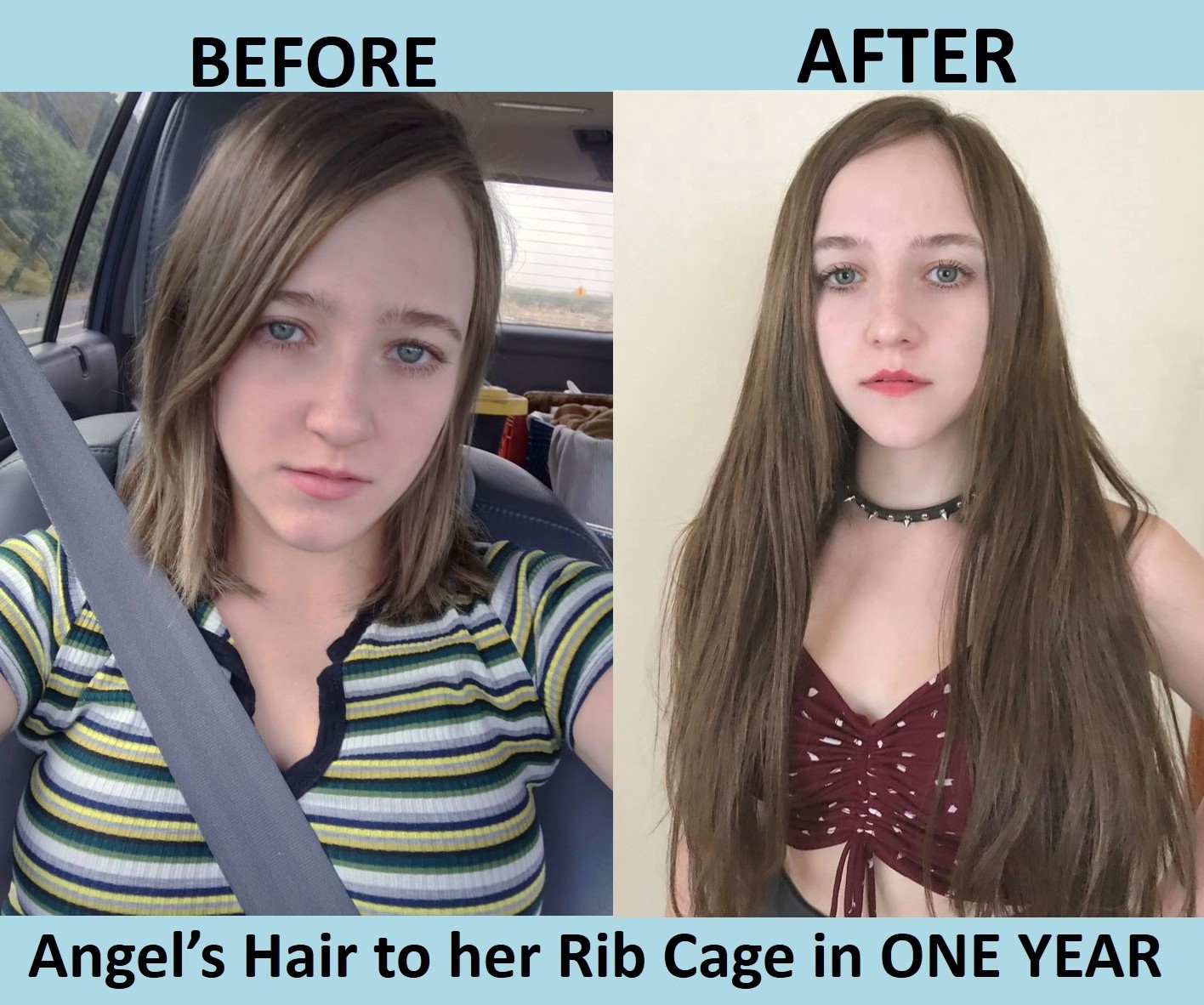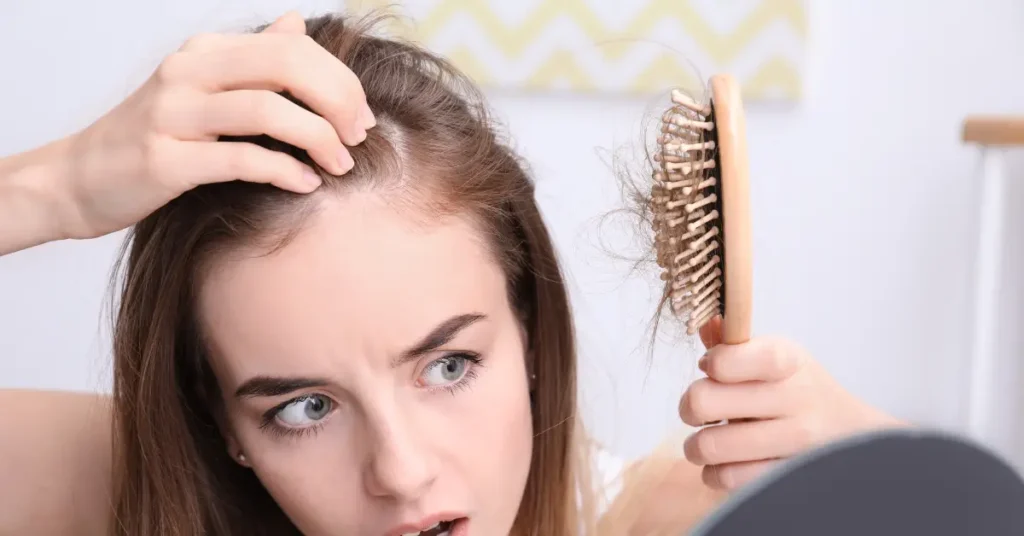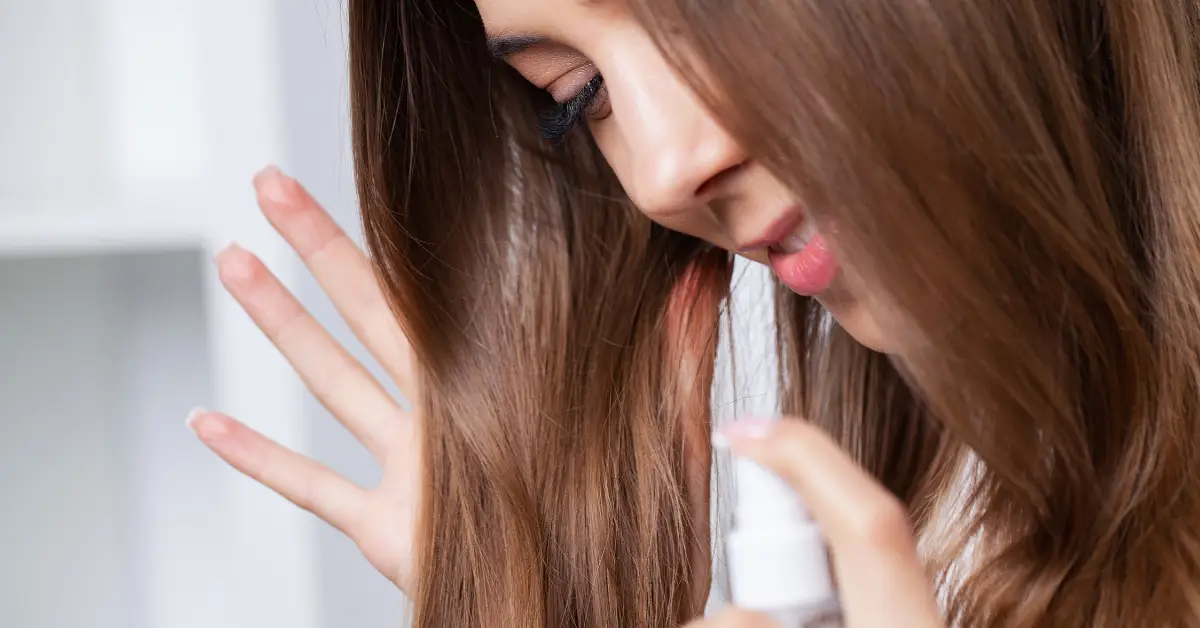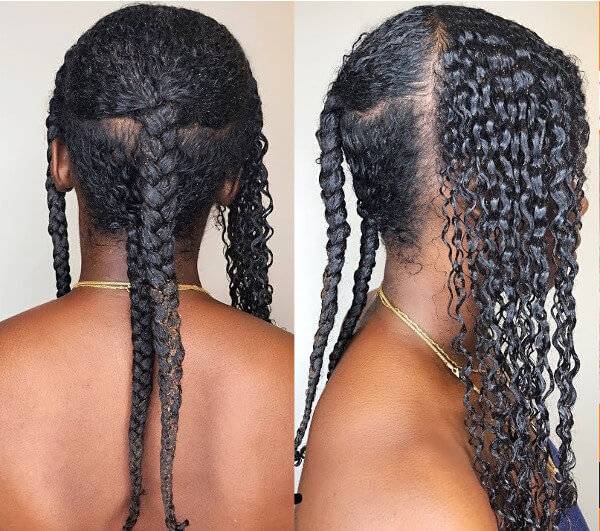How Long Does It Really Take Hair to Grow? Have you ever found yourself gazing at your reflection in the mirror, pondering the mysteries of hair growth? Many of us have, and the journey to understanding just how long it takes for hair to grow can be a fascinating one.
In this article, we will unravel the secrets of hair growth, exploring the intricate processes and factors that influence the speed at which your locks flourish. So, let’s embark on this enlightening journey to discover the truth about achieving the hair of your dreams.

Credit: www.herabeauty.sg
The Hair Growth Cycle
The hair growth cycle consists of three phases: the anagen phase, the catagen phase, and the telogen phase. Each phase plays a crucial role in determining how long it takes for hair to grow and how healthy it appears. Let’s delve deeper into each phase and understand the intricate process of hair growth.
Anagen Phase
The anagen phase, also known as the growth phase, is the active period when hair follicles produce new strands of hair. This phase typically lasts between 2 to 7 years, depending on several factors, including genetics, age, and overall health. During this phase, the hair continuously grows and remains firmly rooted in the scalp. It is the longest phase of the hair growth cycle and contributes significantly to the hair’s length.
Catagen Phase
The catagen phase marks the transition phase between the growth phase and the resting phase. It is a short, transitional stage that typically lasts about 2 to 3 weeks. During this phase, the hair follicles shrink and detach from the blood supply. The hair stops growing and is considered to be in a dormant state. While the hair strand remains on the scalp, it is disconnected from its nutrient source, leading to its eventual shedding.
Telogen Phase
The telogen phase, also known as the resting phase, is when hair follicles take a break from producing new hair. It lasts for approximately 3 to 4 months. During this phase, the detached hair strand remains on the scalp without any growth. Eventually, the old hair sheds and new hair begins to grow in its place as the hair follicle reenters the anagen phase. It is important to note that not all hair follicles enter the telogen phase simultaneously, causing a constant cycle of hair growth and shedding.
This continuous cycle of the anagen, catagen, and telogen phases ensures that hair grows, regenerates, and replaces itself over time. However, it is crucial to understand that each hair strand goes through the growth cycle independently. This explains why some hairs may be in different phases than others, resulting in varying growth rates and lengths.
Now that you have a better understanding of the hair growth cycle, you can appreciate the intricate process behind hair growth. This knowledge can help you make informed decisions about hair care and understand why patience is key when it comes to expecting noticeable hair growth.
Factors That Affect Hair Growth

Hair growth is a fascinating process that is influenced by several factors. Understanding these factors can give us valuable insights into our hair growth journey. While the rate at which hair grows varies from person to person, there are certain factors that play a significant role in determining the speed and quality of hair growth.
Age
Age is one of the key factors that affect hair growth. As we age, the rate of hair growth tends to slow down. This is because the hair follicles gradually become less active and produce thinner and shorter hair strands. Furthermore, the aging process also affects the production of essential factors for hair growth. Therefore, it is common to notice changes in hair texture, density, and growth speed as we grow older.
Genetics
Genetics is another crucial factor that influences hair growth. Our genetic makeup plays a significant role in determining the maximum potential of our hair growth. Some individuals are genetically predisposed to have faster-growing hair, while others may have slower-growing hair. Additionally, genetics also determine factors such as hair thickness, density, and texture. While we cannot change our genetic makeup, understanding our hair’s genetic potential can help us set realistic expectations regarding growth speed.
Hormones
Hormones, powerful chemical messengers in our bodies, also contribute to hair growth. Hormonal imbalances can disrupt the hair growth cycle and lead to hair loss or stunted growth. For example, during pregnancy, hormonal fluctuations can boost hair growth, resulting in luscious locks. On the other hand, conditions such as polycystic ovary syndrome (PCOS) can cause hormonal imbalances that negatively impact hair growth. Therefore, maintaining hormonal balance is crucial for healthy and optimal hair growth.
While age, genetics, and hormones are significant factors that influence hair growth, it is essential to note that maintaining overall health and following a nutritious diet also plays a vital role. Providing your body with the necessary vitamins and minerals promotes healthy hair growth.
Understanding The Rate Of Hair Growth

One of the most common questions people have when it comes to hair growth is how long it actually takes for hair to grow. The rate at which our hair grows can vary depending on a variety of factors. From genetics to overall health, understanding what influences the rate of hair growth can help us better manage our expectations and take the necessary steps to promote healthy hair growth.
Measuring Hair Growth In Inches Per Month
When it comes to assessing the rate of hair growth, we often refer to inches per month. On average, hair tends to grow about half an inch per month, equating to approximately six inches a year. However, it is important to keep in mind that this is just an average, and individual rates can vary.
It’s important to note that hair growth is not a continuous process but occurs in cycles. Each hair strand undergoes a growth phase, known as the anagen phase, which can last anywhere from two to six years. After this phase, there is a transition phase, followed by a resting phase where the hair falls out, known as the telogen phase. Therefore, the rate of hair growth is influenced not only by the duration of the anagen phase but also by the individual’s hair cycle.
Factors Influencing Individual Growth Rates
Various factors can impact an individual’s hair growth rate. Genetics play a significant role, as they determine the potential length and growth rate of our hair. While some individuals may have hair that naturally grows faster, others may find that their hair grows at a slower pace.
A person’s age can also have an influence on hair growth. As we age, the rate of cell division decreases, including those responsible for hair growth. Additionally, hormonal changes that occur throughout life, such as during puberty or menopause, can affect the hair growth rate.
The overall health and condition of our hair and scalp also play a vital role in hair growth rate. A healthy diet and proper nutrition, rich in vitamins and minerals, can contribute to healthier hair growth. Poor nutrition, particularly deficiencies in key nutrients like biotin, can potentially delay hair growth.
External factors, including hair care practices and styling routines, can also impact the growth rate. Frequent use of heat styling tools, tight hairstyles, and harsh chemical treatments can cause damage to the hair follicles and slow down growth.
In conclusion, understanding the rate of hair growth can empower individuals to better care for their hair and manage their expectations. While the average rate of half an inch per month is widely accepted, it’s important to remember that individual growth rates can vary significantly. By considering factors such as genetics, age, health, and hair care practices, we can take steps toward promoting the healthiest possible hair growth.
Factors That May Increase Hair Growth

Factors that may increase hair growth are crucial to understand for anyone looking to promote healthy hair growth. By incorporating certain habits into your routine, you can potentially accelerate the rate at which your hair grows. Three key factors that have been shown to positively impact hair growth are improving blood circulation to the scalp, maintaining proper nutrition and diet, and following a regular hair care routine.
Improving Blood Circulation To The Scalp
One of the most effective ways to stimulate hair growth is by improving blood circulation to the scalp. Proper blood circulation ensures that hair follicles receive an adequate supply of oxygen and essential nutrients, promoting healthier and faster hair growth. There are a few simple ways to enhance blood flow to the scalp:
- Massage the scalp: Gently massaging the scalp with the fingertips in circular motions can improve blood circulation and stimulate hair follicles. Aim for 5-10 minutes of gentle massage each day.
- Regular exercise: Engaging in regular physical activity increases blood flow throughout the body, including to the scalp. Consider incorporating activities such as jogging, swimming, or yoga into your routine to reap the benefits.
- Avoid tight hairstyles: Wearing tight hairstyles, such as ponytails or braids, can restrict blood flow to the scalp. Opt for looser styles to ensure proper circulation.
Proper Nutrition And Diet
Providing your hair with the essential nutrients it needs is vital for healthy growth. Here are some key nutrients to include in your diet:
- Protein: Hair is primarily made up of protein, so it’s important to consume enough of it. Incorporate lean sources of protein, such as poultry, fish, beans, and nuts, into your meals.
- Vitamin A: This vitamin helps in the production of sebum, which keeps the scalp moisturized. Include foods rich in vitamin A, like carrots, sweet potatoes, and spinach, in your diet.
- Biotin: Biotin is a B vitamin that aids in the growth and strength of hair. Foods such as eggs, avocados, and nuts are excellent sources of biotin.
Regular Hair Care Routine
Establishing a consistent hair care routine can significantly contribute to healthy hair growth. Ensure you incorporate the following habits into your routine:
- Gentle shampooing: Use a mild shampoo and avoid harsh chemicals that can damage the hair follicles. Keep the scalp clean by washing your hair regularly.
- Condition regularly: Conditioning helps to moisturize and nourish the hair, promoting its growth. Choose a conditioner that suits your hair type and apply it after shampooing.
- Avoid heat styling: Excessive heat from styling tools can weaken the hair and impede its growth. Minimize the use of heat styling tools and always apply a heat protectant before using them.
How Long Does It Really Take Hair to Grow: Healthy Hair Habits

To achieve long and luscious locks, it’s essential to establish healthy hair habits. These habits play a vital role in promoting hair growth and maintaining the overall health of your mane. By following a few simple guidelines, you can protect your hair from damage and help it grow stronger. Let’s explore some of the key healthy hair habits that contribute to longer, healthier hair.
Avoiding Excessive Heat And Chemical Treatments
Excessive heat and chemical treatments can wreak havoc on your hair, hindering its growth potential. Heat styling tools, such as hair dryers, curling irons, and straighteners, can strip your hair of its natural moisture, leaving it brittle and prone to breakage. Chemical treatments, like dyes, relaxers, and perms, contain harsh ingredients that damage the hair shaft, causing it to become weak and brittle.
What you need to do is minimize your use of heat styling tools and opt for heat protectants when necessary. Additionally, consider embracing your natural hair texture and minimize the usage of chemical treatments. By reducing the exposure to excessive heat and chemicals, you allow your hair to regain its strength and minimize the damage, ultimately promoting healthier hair growth in the long run.
Gentle Hair Care Practices
Treating your hair with kindness is crucial to its overall health and growth. Harsh brushing, aggressive towel-drying, and vigorously rubbing your scalp can cause unnecessary stress and hair breakage.
To prevent such damage, opt for wide-toothed combs or brushes with soft bristles when detangling your hair. Be gentle when towel-drying by softly blotting excess moisture rather than rubbing it vigorously. Additionally, avoid hairstyles that put excessive tension on your hair, such as tight ponytails or braids.
Moreover, it’s essential to keep your scalp clean by washing your hair regularly. While it’s important not to over-wash, as it can strip your hair of its natural oils, a clean scalp provides an ideal environment for healthy hair growth.
Regular Trims To Prevent Split Ends
Split ends can be a real obstacle when it comes to growing long hair. They cause hair to become weak, leading to breakage and stunted growth. To prevent split ends, regular trims are essential.
By trimming your hair every 8 to 12 weeks, you remove the damaged ends, allowing the hair to grow stronger and healthier. While it may seem counterintuitive to cut your hair when you want it to grow, regular trims keep split ends at bay, preventing them from traveling up the hair shaft and causing further damage.
Remember to communicate your desired hair growth goals to your stylist, so they only take off the necessary amount while maintaining your hair’s overall length. Consistent trims will help you achieve the long, healthy hair you desire.
By incorporating these healthy hair habits into your routine, you give your hair the best chance to grow and thrive. Avoiding excessive heat and chemical treatments, practicing gentle hair care, and getting regular trims all contribute to the overall health and length of your hair. Embrace these habits, and soon you’ll notice the difference in your hair’s strength and growth.
Hair Growth Supplements
When it comes to promoting hair growth, many people rely on hair growth supplements. These supplements are packed with essential nutrients and vitamins that are known to support hair health and stimulate growth. If you’re struggling with slow hair growth or thinning hair, incorporating these supplements into your routine may be the game-changer you’ve been looking for.
Biotin
Biotin, also known as vitamin B7, is one of the most well-known vitamins for hair growth. It plays a vital role in the synthesis of keratin, the primary protein that makes up our hair strands. Research suggests that biotin deficiency can lead to hair loss and thinning. By adding a biotin supplement to your daily regimen, you can ensure that your body has enough of this essential nutrient to support healthy hair growth. Remember to consult with your healthcare provider before starting any new supplement.
Vitamin D
Vitamin D is another important nutrient that has been linked to hair growth. Our bodies produce vitamin D when our skin is exposed to sunlight, but many people don’t get enough sun exposure or have low vitamin D levels. A deficiency in vitamin D has been associated with hair loss and slow growth. By taking a vitamin D supplement, you can ensure that your hair follicles receive the nourishment they need to promote healthy hair growth.
Omega-3 Fatty Acids
Omega-3 fatty acids are a type of healthy fat that is crucial for overall health, including hair health. These fatty acids are commonly found in fatty fish like salmon and mackerel, as well as in flaxseeds and walnuts. Omega-3s help nourish the hair follicles, reduce inflammation, and improve hair density. If you’re not getting enough omega-3 fatty acids in your diet, consider taking a fish oil or flaxseed oil supplement to support hair growth.
When it comes to hair growth supplements, it’s important to note that results may vary from person to person. Consistency is key, and it may take several weeks or even months to see noticeable improvements in hair growth. Additionally, while supplements can support hair health, they should not be relied upon as the sole solution for hair growth. Maintaining a balanced diet, managing stress, and practicing good hair care routines are also vital for healthy hair.
Incorporating hair growth supplements into your daily routine can provide your body with the essential nutrients it needs to support healthy hair growth. Biotin, vitamin D, and omega-3 fatty acids are just a few examples of supplements that have shown promising results. Remember to consult with your healthcare provider before starting any new supplement to ensure it’s safe and suitable for your individual needs.
Natural Remedies For Hair Growth
When it comes to promoting hair growth, there are various natural remedies that have shown promising results. These remedies focus on improving blood circulation to the scalp, nourishing hair follicles, and stimulating hair growth. If you’re wondering how to speed up the growth of your locks, try incorporating these effective natural remedies into your hair care routine.
Scalp Massages
Scalp massages are a simple yet powerful way to promote hair growth. A gentle massage increases blood flow to the scalp, which in turn nourishes the hair follicles and boosts hair growth. To give yourself a scalp massage, start by applying some warm oil to your fingertips. Using circular motions, massage your scalp for about 5 to 10 minutes, focusing on areas where you want to encourage growth. This relaxing technique not only stimulates hair growth but also relieves stress and tension.
Essential Oils
Essential oils have long been used for their therapeutic properties, and they can also help in promoting hair growth. One popular essential oil for hair growth is peppermint oil. Its cooling effect improves blood circulation and stimulates the hair follicles. To use peppermint oil, mix a few drops with a carrier oil, such as coconut or olive oil, and gently massage it into your scalp. Other essential oils that can contribute to hair growth include rosemary oil, lavender oil, and cedarwood oil. Remember to dilute these oils before applying to avoid irritation.
Herbal Treatments
Herbal treatments have been used for centuries to enhance hair growth and overall hair health. One well-known herb is amla, also known as Indian gooseberry. Amla is rich in antioxidants and vitamin C, which can help nourish the scalp and promote hair growth. You can incorporate amla into your hair care routine by using amla oil or consuming dried amla. Other herbal treatments for hair growth include hibiscus, fenugreek, and nettle. These herbs can be used in various forms such as extracts, powders, or as part of homemade hair masks.
Frequently Asked Questions For How Long Does It Really Take Hair To Grow?
How Can I Speed Up Hair Growth?
To speed up hair growth, try these tips: 1. Eat a balanced diet with essential nutrients like vitamins A, C, and E. 2. Massage your scalp to improve blood circulation. 3. Avoid excessive use of heat-styling tools and harsh chemicals.
4. Handle your hair gently and avoid tight hairstyles. 5. Consider taking hair growth supplements or using products with biotin or minoxidil.
How Fast Can Hair Actually Grow?
Hair can typically grow about half an inch (1. 25 cm) per month or about six inches (15 cm) per year. However, the actual rate of growth may vary depending on various factors such as genetics, age, health, and hair care routines.
Can Hair Grow 1 Inch A Month?
Yes, hair can grow up to 1 inch per month. Hair growth varies for each person due to factors like genetics, health, and overall care. Eating a balanced diet, reducing stress, and maintaining a healthy scalp can support hair growth.
How Long Does It Take To Grow Hair 12 Inches?
Hair typically grows at a rate of 0. 5 inches per month, so it would take approximately 2 years to grow hair 12 inches long. However, individual hair growth can vary based on genetics, age, and overall health. It’s important to maintain a healthy lifestyle and provide proper care to promote hair growth.
How Long Does It Take For Hair To Grow?
Hair typically grows about half an inch per month, which means it takes about six inches a year to grow.
Conclusion
To sum up, hair growth is a natural process that varies for each individual. Factors such as genetics, health, and maintenance play a crucial role in determining the rate of growth. While there is no quick fix for overnight results, implementing a healthy lifestyle, proper hair care, and patience can certainly promote optimal growth.
Remember, understanding your hair’s unique needs is key to achieving your desired length and maintaining its overall health.

2 thoughts on “How Long Does It Really Take Hair to Grow? The Truth”